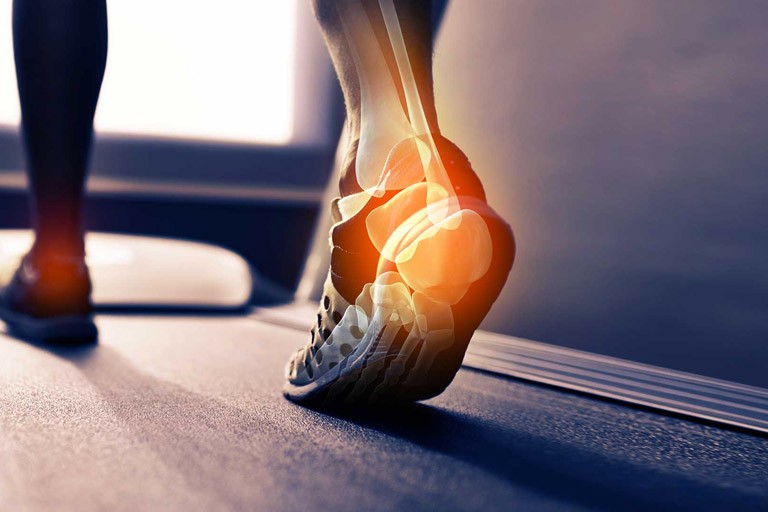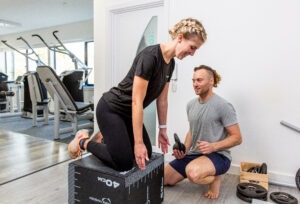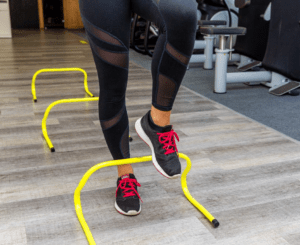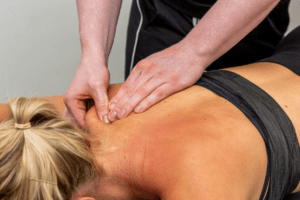Running offers several mental and physical health benefits. However, like most other physical activities, running can come with some risks of injury. In this blog post, we will discuss the five most common running injuries, their causes, symptoms, and most importantly, prevention and rehabilitation strategies to help you stay injury-free and enjoy your runs to the fullest.
- Plantar Fasciitis:
- Cause: Overuse, poor foot mechanics, inadequate footwear.
- Symptoms: Heel pain, stiffness, discomfort during walking or running.
- Prevention and Rehabilitation:
- Wear proper footwear with arch support.
- Gradually increase training intensity and mileage.
- Incorporate stretching and strengthening exercises for the feet and calves.
- Use orthotic inserts or custom-made orthotics if necessary.
- Seek physiotherapy for hands-on treatment, exercise guidance, and pain management techniques.
- Shin Splints (Medial Tibial Stress Syndrome):
- Cause: Overuse, improper training techniques, muscle imbalances.
- Symptoms: Pain and tenderness along the inner edge of the shin bone.
- Prevention and Rehabilitation:
- Gradually increase training intensity and mileage.
- Ensure proper footwear and cushioning.
- Incorporate strength and flexibility exercises for the lower leg muscles.
- Use ice therapy after running to reduce inflammation.
- Modify training surfaces if necessary.
- Seek physiotherapy for a comprehensive evaluation and tailored treatment plan.
- IT Band Syndrome:
- Cause: Overuse, repetitive friction of the iliotibial band against the knee joint.
- Symptoms: Sharp pain on the outside of the knee, swelling.
- Prevention and Rehabilitation:
- Maintain proper running form and avoid overstriding.
- Increase training intensity and mileage gradually.
- Incorporate hip and glute strengthening exercises.
- Use foam rolling or self-myofascial release techniques for the IT band.
- Modify training surfaces if necessary.
- Seek physiotherapy for targeted stretching, strengthening, and manual therapy techniques.
- Achilles Tendinopathy:
- Cause: Overuse, tight calf muscles, sudden increases in training intensity.
- Symptoms: Pain and stiffness in the Achilles tendon.
- Prevention and Rehabilitation:
- Gradually increase training intensity and mileage.
- Incorporate calf stretching and eccentric strengthening exercises.
- Use proper footwear and consider heel lifts if necessary.
- Avoid excessive hill running or speedwork initially.
- Seek physiotherapy for a structured rehabilitation program and guidance on biomechanical factors.
- Runner’s Knee (Patellofemoral Pain Syndrome):
- Cause: Malalignment of the kneecap, muscle imbalances, overuse.
- Symptoms: Dull, aching pain around or behind the kneecap.
- Prevention and Rehabilitation:
- Strengthen quadriceps, hamstrings, and hip muscles.
- Avoid excessive downhill running or running on uneven surfaces.
- Ensure proper footwear and consider orthotic inserts if needed.
- Modify training surfaces if necessary.
- Seek physiotherapy for exercises, manual therapy, and gait analysis.
Conclusion: By understanding the causes, symptoms, and prevention strategies for the five most common running injuries, you can take proactive steps to reduce your risk of experiencing these issues. Remember to listen to your body, gradually increase your training load, wear appropriate footwear, and seek professional guidance from a physiotherapist if you encounter any persistent pain or discomfort. The team at Tops:Health are happy to help. With proper care, you can maintain a healthy and injury-free running routine for years to come. Happy running!



